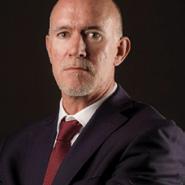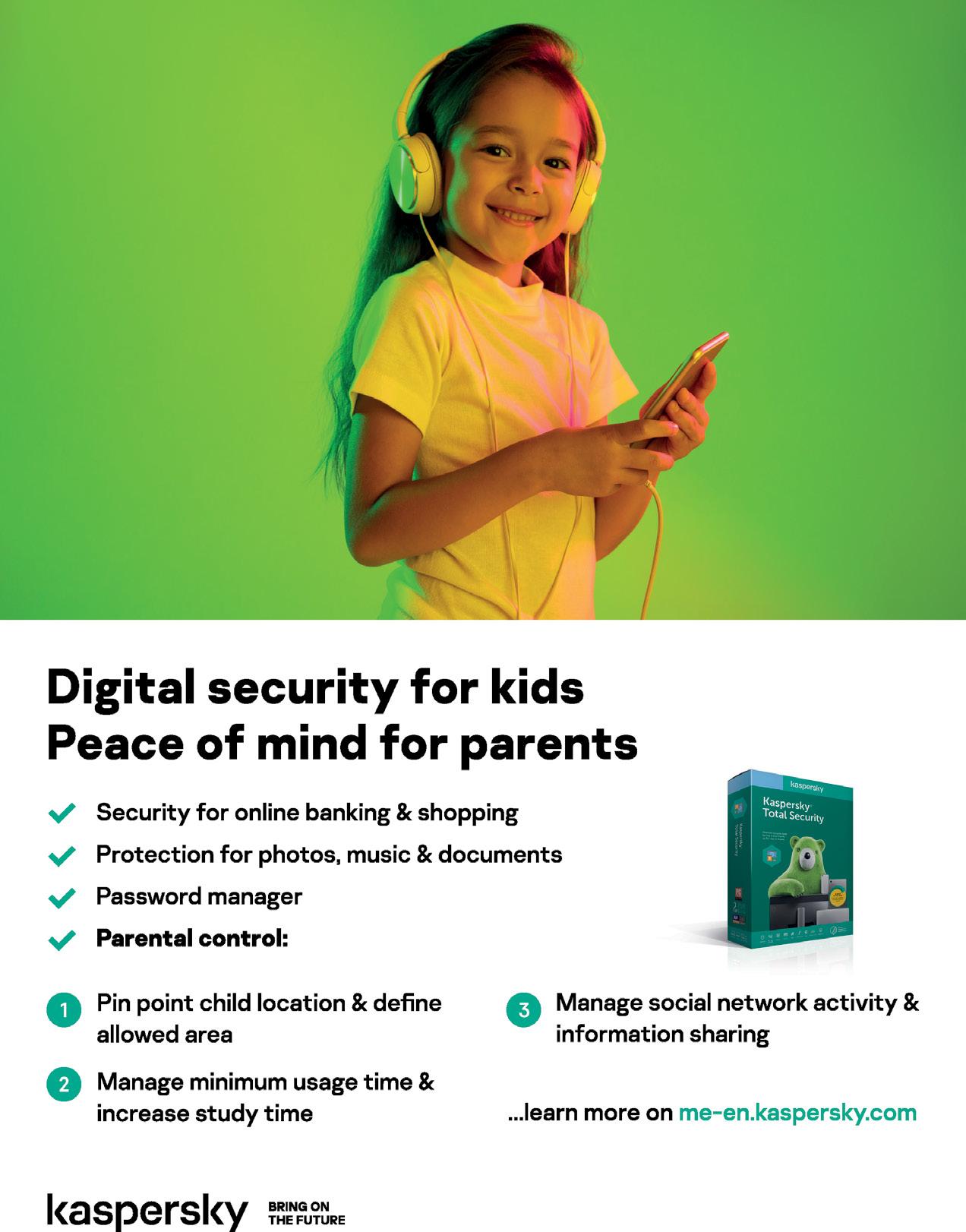


KALKA TO SHIMLA RAILWAY, INDIA








Head of Advisory Board
Dr. Manoj Varghese, Ph.D
Managing Editor

Sarath Shyam
Consultant Editors
Dr. John Andrews
Anuja Mulmule
Emma James
Andrew Scott
Suchita Gonsalves Charlie Jameson
Enquiry: admin@k12digest.com
Creative Consultants




Manjunath R
Louis Bernard
Naomi Wilson Stanly Lui Roshni Rajagopal Sabrina Samson Keith Alexander Ajay Das Rohith Poojary Shirley David
Branding & Marketing Partnerships


Jennifer Anderson

Monica Davis
Suchita Sethy
Siva Kumar
Jessica Edword
Rachel Roy Shubham Amle Anna Elza Stephen Donnell Cathy Chen
Enquiry: admin@k12digest.com
Subscription www.k12digest.com
International Representation Americas 16192 Coastal Highway, Lewes, DE 19958, USA Europe 27, Old Gloucester Street, London, WC1N 3AX, UK
Middle East & Africa P.O. Box 48299, Dubai Silicon Oasis, Dubai, UAE Asia-Pacific Ramanashree Arcade, 18 MG Road, Bangalore – 560001, India
K12 Digest is a digital magazine published by Connecta Innovation Private Limited. All rights reserved. The opinions expressed in the content and pictures provided are those of the authors. They do not purport to reflect the opinions or views of the Connecta Innovation Private Limited or any of its members and we do not assume any responsibility. The publisher does not assume any responsibility for the advertisements, its content, pictures, and all representation of warranties made in such advertisements are those of the advertisers and not of the publisher. K12 Digest is a Free Subscription digital magazine strictly not for sale and has to be strictly for internal private use only. Publisher does not assume any responsibility arising out of anyone printing copy of this digital magazine in any format and in any country and all matters related to that.




Every year brings a set of challenges and opportunities. 2022 was no different. After COVID-19 kept 1.2 billion children out of the classroom in 186 countries, one of the major discussions in 2022 was about getting back to school and guidelines that can help educational institutes and teachers to make this smoother for children. In an article titled How can Schools and Teachers Make “Back to School” Transition Smooth for Children, Bonny Bhansali, Principal of The Green Acres Academy, wrote, “as schools reopen, everyone’s emphasis will be on safety protocols, especially because children are not vaccinated. Parents may be wary and have reservations about sending their child to school.” A ripple effect of such safety concerns can be seen in the rise in the number of homeschoolers worldwide. According to the United States Census Bureau, between 2020 and 2021, there were around 3.7 million students homeschooled in the US, and 49% of parents believe homeschooling provides a better level of education.
Another major topic was the influence of technology on education, a sector with a lot of resistance to change. Lina Ashar, Entrepreneur &
Founder of Kangaroo Kids Education, commented, “People in the education space have seen the same resistance coming in from all sides for relying on technology to impart education. However, it is evident that despite all the resistance, the educational landscape is rapidly changing.” However, technology was both a boon and a bane for students. Sakina Qasim Zaidi, Senior Principal of Orchids The International School, opined, “Social media addiction makes it even more difficult for students to resist and concentrate on academics leading to poor grades.”
As we are nearing the end of 2022, we have collated major articles discussing a variety of topics written by both academics and industry leaders so that you won’t miss the beat when we step into a new year. We hope our efforts this has helped all our readers to stay updated. We will continue to do it.
Enjoy Reading.
Sarath Shyam
Former International School Principal, Former Group Project Director at a World Class Learning Group, Education Consultant - Wright Solutions, United Kingdom




Founder & CEO - Paths to Math Ltd, Former Mathematics Teacher and Principal, Global Teacher Prize Finalist, Finland

Exceptional Educator from Serbia, Founder of Association of the Best Teachers of the Former Yugoslavia, Founder of Magical Intercultural Friendship Network, Founder of Creative Magic - Children’s International Festival, Founder of Magic Village, Serbia
Asst. Prof. Dr. Poonsri Vate-U-Lan
Assistant Professor in Education, Ph.D. Supervisor and Researcher, Thailand
Chief Education Officer, New Nordic School, Finland



Senior Educationist, Author, Keynote Speaker, Co-founderTríade Educacional, Brazil
Former Director School Administration & Business Operations (Large Education Group), Chief Operating Officer - BBD Education, Netherlands & UAE
Chief

Principal,
Senior Teacher‘Pashko Vasa’ school Shkodra, Exceptional Volunteer, Albania
English and Literature teacher, Owner of “The Smart Teens Studio of English” in Belgorod, Russia



Former Program Director, MS in Management Program, GSATM - AU, Thailand & India

Founder & National President - ATAST, General director of IFEST² the international projects competition in Tunisia, General secretary of MILSET Africa, BRISECC member, Tunisia
Master Teacher, Researcher, Innovator, Trainer, Philippines





Innovative Educator of Online Classroom, Pungsaeng Middle School, South Korea
Shady Elkassas
Al Ittihad National Private School-Al Ain, United Arab Emirates
Deputy Head and Dean of Faculty, Dalton Academy, Beijing, China

Former Vice President Security (Large Education Group), Former British Army Officer (Airborne Forces), Senior Advisor – Resilience and Crisis Management (Emerald Solutions Group), United Kingdom & UAE


Innovative English and ICT Teacher, Author, Japan
Distinguished Senior EFL Teacher, ISA Coordinator with the British Council, Motivational Speaker, Tunisia



EdTech Specialist, Speaker and Teacher Trainer, Innovative ICT Educator, ICT learning multimedia developer, Indonesia
Juan Manuel Pico

Revolutionary English Educator, Globally Connected English Studio - Hanoi, Vietnam
Master Teacher, Speaker and Researcher, Philippines


Technology Academy Manager, Microsoft Learning Consultant, Global Trainer, Vietnam
Dr. Manoj Varghese, Ph.D
12
EDUCATION IN 2030 –TECHNOLOGY WILL BE THE GAME-CHANGER Lina Ashar, Entrepreneur & Founder, Kangaroo Kids Education

BACK TO SCHOOL –DO’S AND DON’TS FOR PARENTS
Pooja Harlalka, Head of Counselling/ SocioEmotional Learning, The Acres Foundation

42
20
STRATEGIES TO MAKE E-LEARNING MORE CONVENIENT AND ACCESSIBLE FOR CHILDREN WITH LEARNING DISABILITIES
Prajodh Rajan, Co-Founder & Group CEO, Lighthouse Learning (formerly EuroKids International)

LESS SCROLLING BETTER LIVING - SOCIAL MEDIA DETOX DURING EXAMS
Sakina Qasim Zaidi, Senior Principal, Orchids The International School, Panathur Branch, Bangalore
46
HOW TO MAINTAIN TEACHING PEDAGOGY AMIDST A CRISIS?
Sushma Raturi, Member Secretary, Academic Council, Saamarthya Teachers Training Academy of Research (STTAR)

30
HOW CAN SCHOOLS AND TEACHERS MAKE “BACK TO SCHOOL” TRANSITION SMOOTH FOR CHILDREN

Bonny Bhansali, Principal, The Green Acres Academy
38

INDUSTRY PERSPECTIVE
DO STUDENTS HAVE FEAR OF MISSING OUT (FOMO) IN EDUCATION AS WELL - IF YES, THEN HOW TO TACKLE IT?
Nasir Shaikh, CEO, Lexicon Group of Institutes & MultiFit
16
WHICH IS A BETTER TUITION STRATEGYSTRENGTHEN STRONG SUBJECTS OR HELP WITH WEAK SUBJECTS
Kiran Meena, Co-Founder & Head of Content, SchoolMyKids.com

24
34
PRACTICE-BASED LEARNING IS A WINWIN SITUATION FOR STUDENTS AND TEACHERS
Vivek Varshney, Founder, SpeEdLabs


Amazing Opportunity for Teachers and School Leaders to enhance their knowledge through FREE Teachers Academy masterclasses from international education experts !!!


For more details and registration www.teachersacademy.com

Lina Ashar, Entrepreneur & Founder, Kangaroo Kids Education
LinaAsharisthefounderofKorroboreeInternationalOnlineSchool,FounderEmeritus-Kangaroo KidsInternationalPreschool&BillabongHighInternationalSchool,HappinessAdvocateandaTEDx Speaker.Aftersuccessfullyoperatingover200+PreschoolsandInternationalK12schoolsunderthe brandnameofKangarooKidsInternationalPreschoolandBillabongHighInternationalSchool,Lina hasnowventuredintotheEDTECHspace.HerlatestventureiscalledKorroboreeInternationalOnline School.Linahasbeeninvitedtospeakaboutthefutureofeducationandthechangesweneedto bringaboutatvariousTEDxevents.Inherendeavourtomakeadifferenceineverychild’slife,she becameanauthor.She’swrittentwobooks‘WhoDoyouThinkYouAreKidding’and‘DramaTeen’. Oneisabookonparentingandthesecondoneisaguideforbothparentsandteens.

Change is the only constant. Most change is first met with resistance till we get used to the new status quo. Historically change has almost always been met with resistance. There is an evolutionary reason for this. Part of the brain - the amygdala - interprets change as a threat and releases hormones that are associated with fear. This is why any change is a challenge to your brain and why your brain craves certainty. Human beings, organisations, and society; all resist change. This is even if we are dissatisfied with the way things are and if we can see a positive reason to change.
Likewise, education has a lot of resistance to change. Despite knowing that the existing way of learning and teaching is outdated, redundant, and not relevant to where technology is taking humanity, yet we resist changing the conventional physical school setup. Did you know that the printed book that triggered a surge in the love for learning in the
west was initially resisted by school teachers as it forced schools to drastically change their teaching methodology.
People in the education space have seen the same resistance coming in from all sides for relying on technology to impart education. However, it is evident that despite all the resistance the educational landscape is rapidly changing. The pandemic has been a boon in disguise as parents got to witness first-hand how online education will function and how it can help children. Statistically One and a half billion students around the world, according to UNESCO, were engaged in remote learning at the height of the COVID-19 pandemic in March 2020. However, the observation is that most schools replicated online what they would normally do in a classroom, due to which teachers struggled as distance learning was new to them and they had to go through a paradigm shift to make their sessions interesting.
Despite knowing that the existing way of learning and teaching is outdated, redundant, and not relevant to where technology is taking humanity, yet we resist changing the conventional physical school setup
Online learning is a whole new ball game and it will require a curriculum that is designed specifically for distance learning. However, Parents, teachers, and educators have a lot of questions as Online learning is new to everyone. So, let’s start with looking at a few trends of what education will look like in 2030.
1. Technology will enter the classroom: currently, technology is used only as a source of information, however, soon children will have their own digital devices and teachers will use different tools to teach children and make their learning experience experiential and personalized.
2. Each child is unique and learns differently and technology allows educators to make the learning experience more individualistic and personalized. Technology helps us move away from the instruction method of teaching to selfdirected learning.
3. Educators are working on a homeschooling module as more and more parents are looking for better mediums of education. The home-schooling modules will make the learning experience more personal as they will be tailored especially for an individual. Their strengths and weaknesses will be taken into consideration and the concepts will be taught accordingly.
4. Physical schools may cease to exist. As parents will realise that classes can get over in all of 4 to 5 hours and then children have the full day to themselves to enjoy their childhood and focus on outdoor and creative activities.
5. Educators will focus on all-around learning where the curriculum will incorporate neuroscience, behavioral science, concepts of spirituality, social and emotional skills.
6. Project-based learning will be emphasized with the help of various Edtech platforms that will come into existence over the next decade.
7. Children will have time for recreational activities where they will be able to build on skills they are interested in like music, art, sports, and more.
8. Students will be equipped to assess themselves and they will determine whether they have understood the concept completely, if not they will have the opportunity to go back to the concept and attempt to understand the same.
Educators that have the foresight have already started working on educational modules that will incorporate these future trends. Are you ready to leave our educational conditioning behind and move ahead with time to embrace this change?
Online learning is a whole new ball game and it will require a curriculum that is designed specifically for distance learning

Kiran Meena, Co-Founder & Head of Content, SchoolMyKids.com
Kiran Meena is the Co-Founder & Head of Content at SchoolMyKids.com. She is responsible for all day to day activities and handling the content of the platform. Previously Kiran has worked as Assistant professor Botany in Hansraj College anand Shivaji College, Delhi University. She is a BSc Hons graduate from Hindu College and an MSc Department of Botany from Delhi University. A mother of two adorable kids, Kiran enjoys classical Dance and Art & craft. She has a senior diploma degree (4 years) in kathak. She also likes making Tanjore, Gold and Clay & ceramic paintings.

Each human being, each student is unique and so is their method and pace of learning. Not all students grasp concepts well in the school classrooms. The reasons could vary from capability of the subject teacher and time spent on a particular topic, on one hand, and on the other, focus of our own children. They could just be idling away, daydreaming or just too bored and sleepy. So, to tackle the backlog or complete the assignments, parents do feel the need to take some external help.
Now, let us consider the case of a committed student! Even with the best of knowledge, being disciplined with regularity of attendance, concentrating in class, and submission of homework, the pain of not having scored well in exam is something a sensitive and bright
student never forgets. Hence, it is a valid case for some extra assistance and guidance from tutors to provide justice to the brainy and hardworking ones.
Although some may criticise and denounce the trend of sending children to tuitionsthey may attribute it as luxury and parents not doing their parental duties well, many parents believe that tuitions are a significant part of students’ overall academic growth and development. Many parents say that instead of gallivanting around, the routine of tuitions instil a disciplined practice where the students learn to manage timings, keep a tab of what needs to be achieved, importance of completion of work, and get healthy opportunities to socialize.
The parents acknowledge that the tutors are skilled and with years of experience, they have
Many parents say that instead of gallivanting around, the routine of tuitions instil a disciplined practice where the students learn to manage timings, keep a tab of what needs to be achieved, importance of completion of work, and get healthy opportunities to socialize
sharpened their teaching methodologies. They are also well conversant with the syllabi and the trends that examinations follow. Some of the more up-to-date tutors, are even personally acquainted with the examiners, understand the mindsets and compulsions of academia, and help students attain the skills to attempt any challenge that is served to them.
In a tuition scenario, the stress is low, students can pose questions, and they have complete attention of the tutor. It is a potent mix to hone your skills, strengthen the subjects you are already good at, and of course, understand the concepts of the difficult subjects that you were averting so far.
Yes, if you were going to the tuitions only to complete the homework and be up to date with the syllabi, then it makes sense to cover your weaker subjects first. In the paucity of time, you may handle your stronger subject homework yourself. The same concept is also applicable during examinations, especially in the junior classes. As your aim is to pass all the exams, to move on to the next grade, you may demand your tutor to prepare you for weaker subjects first. This routine is not as useless as it may seem. The discipline of attending to all your subjects, even the weaker ones, gives you a firm foundation. Over the years, students learn to understand what the lapses are, what they need to overcome, and use that new life strategy to overcome any subject matter in future.
Gone are the days when children who went to tuitions were seen as poor in studies. In my experience, for the last 2-3 decades, children with capabilities and promising academic futures line up for tuitions for all rounded growth and excellence. In other words, while they may work on their weaker subjects, the need to excel
A skilled tutor who gets the opportunity to focus on developing concepts and to superimpose them on any given situation for attaining solutions, opens an entire range of lateral thinking for their students, to ensure their professional development and success
and build a niche in that one particular subject that may build a career for them, is very high.
Besides the conflict between strong and weak subjects, the evolved folks today attempt to master the process of learning – conceptualizing, memorizing, writing, illustrating, analysing, and finally concluding. The learners here gain mastery on a process that can be then applied to any subject and comes extremely handy in senior level academics and later in professional life. To immerse the children in this kind of learning, the parents themselves, have to be evolved enough to foresee and invest in a method and a tutor that would decimate the gap between strong and weak subjects.
Certain parents shared that the students are mostly explained a concept in school through its straightforward definitions. The questions that follow also operate on the direct application of the ‘readymade’ formula. Even the best of the students fails to apply the conceptual idea into a practical situation.
For instance, let us consider the question: “Highlight any three hydraulic structures as part of water management programmes initiated in ancient India along with the period when they were built.”
The students were most likely taught
1.“What are hydraulic structures?” as a stand-alone topic. Along with it,
2. “Names of some hydraulic structures.” And
3. “What is water management?” again, as a separate sub topic.
For the student to correctly respond to the main abovementioned question, s/he should have the capability to connect part no. 1 of the question with part no. 3. How do these hydraulic structures lead to water management? Because
each hydraulic structure caters to a different water management challenge! And then remember the structures around the country that resolve the given water management issue. Oomph!
So, the correct answer is Sophisticated hydraulic structures like dams build of stone rubble, reservoirs of lakes, embankments and canals for irrigation were built in various regions of the country.
(i) A sophisticated water harvesting system channelling the flood water of river Ganga was built at Sringaverapura near Allahabad in the first century B.C.
(ii) Nagarjunakonda in Andhra Pradesh, Bennur in Karnataka, Kolhapur in Maharashtra, and Kalinga in Odisha have evidence of irrigation structures.
(iii) In the 11th century, Bhopal Lake, one of the largest artificial lakes of its time was built.
(iv) The tank in Hauz Khas, Delhi was constructed by Iltutmish in the 14th century to supply water to the Siri Fort Area.
A skilled tutor who gets the opportunity to focus on developing concepts and to superimpose them on any given situation for attaining solutions, opens an entire range of lateral thinking for their students, to ensure their professional development and success.
Nowadays, the students and their parents are on the same page when it comes to the requirements and the rigour for academic excellence. They acknowledge that while the weaker subjects have to be managed for basic minimum grades, the stronger subject must be mastered…exceled in! It is akin to choosing your battles. It is a ‘minimization of effort’ and ‘maximization of result’ strategy.
Prajodh Rajan, Co-Founder & Group CEO, Lighthouse Learning (formerly EuroKids International)
Prajodh Rajan is an education entrepreneur who enjoys an enviable reputationintheindustry,forhispioneering efforts in early childhood education in the country, besides creating a fertile ecosystem for entrepreneurship in the education sector. He is responsible for guiding the strategic direction and growth of Lighthouse Learning (formerly EuroKids International Group). Under his leadership, EuroKidsInternationalGroupgrewfromtwo Pre-Schools in 2001 to a network of 1,200+ Pre-Schools in over 360 cities. The Group also added over 38 K-12 schools across multiplebrandsinitsjourneytilldate.

While online learning also known as e-learning has been around for quite some time, it has never been as crucial as it is now, thanks to the pandemic. Both children and educational institutions had very little time to adapt to the concept of online learning or tech-enabled learning, as the pandemic hit Indian shores in early 2020. This quick transition left many children with learning disabilities vulnerable.
Such children encounter unique barriers, as learning disabilities, namely cognitive impairment, dyslexia, dyscalculia (difficulty with math), or auditory processing disorder, preventing them from understanding and retaining even simple concepts or communicating with their educators, which can demotivate them and negatively affect their performance. A good example in this context is Darsheel Safary’s character Ishaan Awasthi from Aamir Khan’s
film – Taare Zameen Par. Therefore, it is critical that parents and caregivers have the necessary resources and information so that they can help children with learning disabilities and enhance their learning experiences. The use of technology in education plays a significant role here, as it enables a convenient and enriching educational journey for students with disabilities.
In this article, we will explore a few strategies to make e-learning convenient and accessible for such students.
Parents should take the time to understand the e-learning program that their child will be using. They must learn about the resources that are available, how their child is going to use the program, and what they can do, as parents, to best support them. Parents can ask the following questions to see how
The use of technology in education plays a significant role here, as it enables a convenient and enriching educational journey for students with disabilities
accessible the program is for their child: Will the child feel confident using the platform on their own? Will the child be able to interact with the website, instructors, and classmates with ease? Will the child be able to finish the basic activities such as submitting their homework and taking tests by themselves? The child should have no trouble accessing the program’s content material. Moreover, children with cognitive impairment, low literacy skills, or any other learning disability should be able to easily understand the concepts taught in the program.
It’s certainly not easy to switch from a traditional classroom to online learning. It muddles the distinction between work and play for children. To help them adjust, parents must ensure that they have a dedicated study area that is free from all distractions. They should also ask children for inputs on where they will be most comfortable doing their schoolwork and what they will need in that space to provide them with convenient access to supplies and resources. Basically, allowing learning-disabled students to study at their own pace and in their own way helps them succeed. E-learning provides students with the option to plan their own schedules, which relieves the unnecessary strain that most learning-disabled students in traditional classrooms experience. It also removes the discouragement and wards off fear, as well as, hesitation. Students can take breaks anytime or study for as long as they want, while still being guided by the right principles to prevent mental or emotional exhaustion.
The state of technology is ever-evolving. People in general are able to use an increasing variety
of digital technologies. Despite the difficulties brought on by the COVID-19 pandemic, schools and other educational institutions have done the best they could with what they had to support students in continuing their education. However, parents must also make an effort to stay updated with ever-evolving technology developments. These can assist parents and children in overcoming the current difficulties they may be facing with online learning. By staying informed, parents may discover more effective resources and tools that will give the children the academic support they need to succeed. For example, students with dyslexia can keep up their journey of learning via software that helps them with writing, or students with an auditory processing disorder can embrace technology that converts speech into text.
With this, one thing is certain – so many students now have access to high-quality education whenever and wherever they are, thanks to technology enabled learning . However, “many” does not include all. Thus, parents and caregivers, along with educators must work together to ensure that children with learning disabilities don’t fall behind, especially when it comes to something as crucial as education. And one thing that should help prevent the same is to ensure that learning-disabled children have access to use technology that can help improve their learning experience along with access to all necessary educational resources and materials that can help them reach their goals.
Undoubtedly, e-learning and tech-enabled learning is the future of education. Hence, making it convenient and accessible, especially for students with learning disabilities, can prove to be a major contribution to inclusive education.

Nasir Shaikh, CEO, Lexicon Group of Institutes & MultiFit
Nasir Shaikh brings experience, compassion and leadership together, to create a better learning and growing experience, for himself and others. Before taking on as the CEO, The Lexicon Group of Institutes (2020), Mr. Shaikh was a name to reckon with in the hospitality industry where he received many accolades and recognitions. He has won Debbie Marriott Harrison Take Care Award of Excellence 2017, Asia Pacific Take Care Award 2019 – Marriott International, BW Hotelier- General Manager (2017) and Best Business Council of the World - Marriott International 2019 amongst many others.

There are events and there are ‘life events’ – Covid-19 has been that life event for students, where in close to two years of their lives have had a dramatic change. These two years have shown the adult world the agility and adaptability of younger minds. Prior to March 2020 the only learning form they knew was in physical presence of their teachers. Between 2020-2022, they have experienced various modes of learning i.e., Virtual Classrooms, Hybrid Classrooms and Physical Classrooms and to each the response has been overwhelmingly positive.
Through this article we will try to briefly address what I feel has transpired through the minds of students from both personal
interactions and referencing studies about the topic. Here we will look at two aspects of FOMO – 1) related to the absence of physical classes for a duration of 12 to 18 months and 2) the want to do more.
Across the country schools have reported less than 50% students or their parents opting to attend classes in person. Whilst the teachers and faculty have been positively reinforcing the need to come back, across age groups the students (in some cases, because of the parents) there has been a resistance. Reasons range from the comfort zone that has developed, the ability to multi-task, fear or simply the lack of intent. Interestingly the age group that has been vaccinated has shown the lesser intent
The faculty and teachers are the unheralded ‘Covid Heroes’ who through their sheer passion to make a difference have defined and saved the future of the world
on immediate return to classes and in person exams vs. the age group of 4 years to 12 years where the response is more forthcoming. What I am getting at is that I do not think there was a high percentage of FOMO in respect
be a percentage of students who would have experienced the fear of missing out and from the perspective of Leaders in Education, I think the key was connections, staying connected and the faculty at large should be given credit for what they were able to achieve considering all the stress that surrounded them in the personal zones. The faculty and teachers are the unheralded ‘Covid Heroes’ who through their sheer passion to make a difference have defined and saved the future of the world.
Let’s now look at the side where there is the want to do more and abundance of choice that is available to the students of today and their awareness around it. As a student, from time to time one may find the opportunities available to explore overwhelming. The choice available today is vast and may cause more confusion and lead to FOMO because you may find a fellow student doing something that seems very interesting from the outside and there is a want to do it.
to learning and education at large by the students due to the pandemic. Many feel that they have even got more due to the pandemic due to the accessibility to faculty and trainers from across the globe. Saying that there would
I will stay short of calling it a crazy desire of wanting to do everything moves students towards developing a form of social anxiety which we also call the ‘fear of missing out’. This primarily develops due to the social settings, peer pressure, the need to want more and do more or because of something that they have created in their own minds. This may cause a deep sense of envy and affect one’s self-esteem. There is the fear of wanting to avoid regret of not doing something. The more choices one has the less satisfied they may be with the choice that they have made. Unfortunately, at a societal level, the message is that if one makes an incorrect choice, it really is their own fault, and they should have

researched more or thought it over better. The inability or the unsaid absence of second chances is something that leads to FOMO and it all starts by comparisons. Comparisons are a definite pitfall and should be avoided, one needs to find their own space.
Everything we do has consequences and the consequences of trying to do everything because of the fear of missing out can be severe. It starts with one not caring enough for oneself, which impacts the mental health, sleep patterns, emotional stability or the lack of it, food diets, personal life… and the list goes on! This in the end severely impacts their ability to function effectively and has a deteriorating impact on their overall health. Over time, one realises that their hunger for new opportunities may be disproportional to the benefits that arise out of it and what you have done is not necessarily the most productive or efficient use of one’s time and energies.
One of the simplest ways of tackling this concern is by setting milestones and goals. This will orient you correctly towards the steps and opportunities one need to take to grab the opportunities that are available/desire more
scientifically vs. that of impulse or FOMO. One needs to stop trying to be an expert at everything in their field of interest. Instead find out what you are passionate about and pursue the same. Additionally, I also feel that faculty need to support students by helping them create learning maps/journeys which will give a relatively comprehensive roadmap which is aligned to the goals of the students.
There are times when things get too hectic, this is the time you need to step back and review what you are doing. Review if this is aligned to your goals, is this what you want. Do this both unapologetically and without judging yourself or wondering what others will think of you.
Learn to say no, this is a fantastic skill and ability to have, this will allow you to do only things that align with your personal and professional goals. This is very similar to your food habits, if you don’t know when to stop or say no – you will over eat thereby impacting your weight and overall wellness.
The way to tackle it is to apply the KISS principle – “Keep it simple, stupid”. The few things that work for me are:
The inability or the unsaid absence of second chances is something that leads to FOMO and it all starts by comparisons
1. Keeping it Simple, uncomplicating the uncomplicated. Being honest and saying no when I need to.
2. Listening to my inner voice. When your inner voice is telling you something, listen to it.
3.Don’t procrastinate, take a call. If aligned to your goals and milestones – time map it and go for it.
4. Avoid Aping, find your individual space
5. Find happiness in others success, envy can kill
6. At times – smile and let go
7. Don’t let anything impact your peace of mind
8.Contentment – Be content, sometimes ‘Dil Maange More’ is not good
9.Meditation really helps me define my choices as my mind is in the desires state for it to make the right choices
10.Getting a great night’s sleep every night is my priority and should be yours.
In the words of Andrew Yang ‘Fear of Missing Out is the enemy of valuing your own time’ and sometimes FOMO may lead you to miss out on everything in entirety as your are neither here nor there. Remember everything in hindsight has 20/20 vision as one’s past is always ready and waiting to entangle and deflect you.
Learn to say no, this is a fantastic skill and ability to have, this will allow you to do only things that align with your personal and professional goals

Bonny Bhansali, Principal, The Green Acres Academy

Ms.BonnyBhansalihasmorethan17yearsofexperience in the field of education. She holds a Master’s degree in History and a Bachelor’s degree in Education from Mumbai University. She began her teaching career with Smt. Sulochanadevi Singhania School, a renowned ICSE school in Thane in 2003. From 2005 to 2019 she was associated with the New Horizon Group of Schools, a chain of reputed CBSE schools across Thane and Navi Mumbai. She worked as the Secondary Coordinator and Head of the Social Science department in New Horizon Public School and subsequently as the Vice- Principal in New Horizon Scholars School. She was also appointed as the Examiner and Coordinator for AISSEandAssistantCentreSuperintendentforUGC-NET,NEET and JEE several times.

With almost two years of empty classrooms, silent playgrounds and deserted corridors, schools are set to welcome students back to the campus. This is a good time to reflect on how we can make this transition as smooth as possible for our students. All children might have had different experiences during the lockdown, and they may react quite differently to the reopening of physical schools. Some will readily return to school, while others will struggle and experience anxiety or apprehension about moving out of the comfort of their homes. Teachers must be prepared to deal with this and devise a transition plan that benefits everyone and allows for a smooth return to school. It might make sense to reopen in a phased manner. Fewer school hours for the first few days might be the best way to go as it will help students
make the gradual transition from online school to physical school.
Some basic guidelines that can help educational institutes and teachers to make this smoother for children, include:
1. Focus on safety protocols: As schools reopen, everyone’s emphasis will be on safety protocols, especially because children are not vaccinated. Parents may be wary and have reservations about sending their child to school. Try to put the parents’ mind at ease by informing them of all safety guidelines that are in place in the school. Creating a virtual tour so that new parents can see the infrastructure and classrooms and understand what it would be like for their child to attend school will definitely be very useful. Additionally, schools can organise virtual parent orientations to debrief parents
Creating a virtual tour so that new parents can see the infrastructure and classrooms and understand what it would be like for their child to attend school will definitely be very useful
about everything they need to know and prepare for before school starts
2.
An important thing for teachers to focus on would be how can he/she create a classroom environment that welcomes children back to school after the long hiatus? Creating a daily schedule will help children know what to expect. This schedule can be shared before the school reopens to give students time to understand it and come well prepared on the first day of school. Having a physical copy put up in the classroom might also prove beneficial. Setting up classroom routines will be extremely important as students have not seen a normal school day for a long time. The online routines and structures were significantly different so teachers will need to spend time to set up the in-person classroom routines so that students know what to look forward to each day.
3.
It will take time for students to adjust to a full school day, so interspersing co-scholastic and sports activities will keep the students meaningfully engaged and help them stay focused and calm. Giving adequate breaks in between will provide a breather and some respite from academics.

Teachers can also provide the option of flexible seating as it will give students a voice to choose a place that is most comfortable for them and will make the classroom seem more inviting.
Devising learning plans that provide more opportunities for authentic group work will enable students to build connections and forge new relationships with their classmates and also ease them back into in-person learning.
7. Socio-emotional well-being: Teachers, especially homeroom/class teachers might need to help students understand the importance of identifying and managing their emotions. It is vital to let students know that their teachers are always available and they can ask for help whenever needed. Having a “calming corner,” or a quiet spot in the classroom where children may go in case they are feeling overwhelmed, is an excellent way to help learners adjust to a full school day. This will relieve anxiety, allowing students to return to their task when they are ready for it.
8. School-parent communication: Teachers will also need to stay connected with the parents and keep the lines of communication open informing them about their child’s academic and social progress.
9. Staff enrichment and well-being: School leaders will also have an essential role to play in preparing their teachers for success in dealing with the challenges of this transition. They must provide opportunities for professional development and support for teachers. They must review and enhance resources for staff health and well-being and make sure that teachers have access to mental health support
Another way in which teachers can help students develop a common class identity would be by asking students to choose a class mascot or by thinking of a unique name for their class. This might help them develop a sense of connectedness and kinship.
It’s not going to be an easy transition to make. Setting a positive tone for return to physical school will require thinking out of the box and adapting quickly to changes. But there’s nothing that you can’t achieve with some strategic planning, flexible approach
mindset.
and a positive
Teachers can provide the option of flexible seating as it will give students a voice to choose a place that is most comfortable for them and will make the classroom seem more invitingINDUSTRY PERSPECTIVE
Vivek Varshney, Founder, SpeEdLabs
An investment banker by profession with teaching and making an impact in the field of education as his core purpose, Vivek Varshney, founder of SpeEdLabs, holds a rich experience in education innovation. AtechnophileintheEdTechspaceandpossessing7-yearinvolvementin teaching, Vivek has designed a hybrid pedagogy with the right balance of AI-EdTech and classroom teaching through his venture SpeEdLabs. Vivek is an IIT Kanpur and IIM Lucknow alumni and has made the idea of an effective learning method via redesigning of the curriculum a reality.

Practice-based learning is a co-creation of knowledge that combines theory and real-world experience. The ultimate objective of practice-based learning is to help students evolve into self-sufficient future professionals who can build, assess, redesign, and expand self-practice over time, in turn increasing their chances to augment results.
Students collaborate to tackle real-world problems in their classrooms and communities through this form of learning. Problem-solving, research and social skills develop through these real-world customized learnings and are practice is long proven to be a robust way for longer term retention. According to a study, these activities engage learners, improve recall, and help build a lifelong learning paradigm.
Following COVID, there has been an online transformation in the education sector. India has around 580 million Indians between the ages of 5 and 24, and about 250 million are studying in metro and tier 2 schools. Thus, young and educated people make up around 36% of India’s population and have access to their mobile phones and learning devices. This trend demonstrates a sizable market for the EdTech revolution to engage in and grow. The online education sector would generate $11.6 billion in revenue by 2026.
Parents and students seek faster-expected outcomes, and practice-based learning is a customized approach where the students’
Parents and students seek faster-expected outcomes, and practice-based learning is a customized approach where the students’ actions drive the results
actions drive the results. We require a system that helps students learn and ensures they engage in teamwork, experiential learning, and reflection.
Practice-based learning platform compares each student’s efforts with conceptual understanding and provides personalized feedback. Its goal is to enable every student to reach their best potential by offering an excellent, technology-based Learning and Practice platform. This learning approach should be a proponent of the idea that practice makes us perfect.
According to a survey of 13 Indian cities, almost 85% of teachers desire to keep using online learning as a supplement to traditional teaching techniques in the post-pandemic environment. Practice-based teaching courses are relevant and responsive. Hence, educators must blend theory and work experience with a planned, reflective process throughout the study. The educator’s role is to provide gentle guidance and answer queries through highly personalized communication in the lectures. It also revolves around a dynamic feedback loop through datadriven dashboards for teachers.
India has had a 200% increase in search interest for “online education” since January 2020. The objective is to move from a passive learning mode to one where they take ownership and responsibility for their learning and assume roles of problem-solvers, decision-makers, negotiators, and communicators.

Self-study contributes more than 70% toward learning outcomes, and these personalized learning apps provide monitored accessibility anywhere, anytime. They provide personalized and data-driven feedback through analytical dashboards. The students can actively create and pursue specific learning objectives and take advantage of new intellectual growth and development opportunities. The platform’s reliable feedback would empower students to exhibit the capacity to create critical selfassessments and apply this information to selfcontrol and development.
Practice-based learning is a customized approach. Practise-based learning is a teaching and learning method in which students engage in a datadriven personalized mode of learning. Reliable
feedback and analysis on opportunities are critical to improving the learners, and practicebased learning apps use dashboards to provide individual and national level comparisons.
The students must evaluate the options and then choose and implement an effective solution. They must ask questions, identify essential information, debate and discuss strategies. While doing so, students apply what they have learned to possible solutions.
Practise-based learning is the most optimal learning method and a win-win for educators and students. The next generation can acquire higher levels of professional competence and be better prepared to perform skilled tasks in the current environment with the aid of practicebased learning. As a result, implementing a practice-oriented approach enhances the current educational initiatives.
Self-study contributes more than 70% toward learning outcomes, and these personalized learning apps provide monitored accessibility anywhere, anytime

Sushma Raturi, Member Secretary, Academic Council, Saamarthya Teachers Training Academy of Research (STTAR)
Sushma Raturi is an enthusiastic professional educator with over 25 years of varied work experience in the field of education.SheisanalumnaofSt.Mary’s,Shillong,whoafter obtainingagoldmedalinherpost-graduatecourseinPublic Administration, decided to do her Bachelors in Education to pursueherchildhooddreamofbeinganeducator.Currently, she is working with Seth Anandram Jaipuria Group of Schools as Head of Teaching, Learning and Training. She is also Member Secretary of Saamarthya Teachers Training Academy of Research (STTAR), a premier teachers’ training institute that aims to develop teaching competencies based on extensive research on all aspects of education.

Educators across the world have time and again proven their mettle by facing the toughest crisis in imparting education to the most distressed students while being affected by similar situation themselves.
Conflicts, natural calamities, and pandemics have disrupted education across the world. During the recent COVID-19 pandemic, teachers were thrown off gear while adapting to teaching in the distance learning mode. Such a rapid transition was very challenging and stressful as they had to figure out the way to use the digital tools competently and also revamp the curricula and pedagogies that would keep the students engaged. In some cases, teachers had to device different strategies and create customized lessons to assist their students in navigating the world of distance learning.
Amid crisis, the responsibility of making the classroom environment conducive to learning falls on the teachers. To this end, both extrinsic
and intrinsic motivation plays an important role in shaping a teacher’s attitude towards their profession. A plethora of case studies have shown that it is the intrinsic motivation that helps teachers to optimize their own practice. In turn, they device ways to keep their students motivated by using diverse innovative approaches which results not only in improved learning but also better teacher satisfaction.
With rapid changes in the education ecosystem, the profiles of both learners and teachers have undergone a sea change and more so during a crisis, be it of any nature. The mental, emotional and physical toll that a crisis takes on students has a direct bearing on their learning outcomes. Teachers have to themselves tide over the strain of the crisis and continue teaching by adopting cognitive and active learning approaches. They need to be cognizant of certain factors like psychosocial environment of the class, student
With rapid changes in the education ecosystem, the profiles of both learners and teachers have undergone a sea change and more so during a crisis, be it of any nature
readiness, teacher-student rapport and student engagement for a successful curriculum delivery.
In times of crisis, a proactive teacher will strive to:
● Decongest the curriculum, clarify and simplify the lesson that is easily comprehensible.
● Plan lesson segmenting for better retention as it is easier to grasp smaller portions of the concepts.
● Communicate learning objectives/goals that will keep students on track.
● Align assessments with the learning objectives, which will help teachers fathom whether their objectives were met or not.
● Be flexible and design learning experiences that tap into a variety of modes of learning.
● Keep abreast of latest and innovative teaching practices that will be conducive to the situation they are in.
● Align instruction with relevant resources and strategies including psychosocial elements in their teaching learning process.
● Model meta cognition.
● Design innovative assessment tools to assess student learning and plan instruction accordingly.
● Offer timely and constructive feedback to students and be mindful that it does not discourage their learning.
● Incorporate Socio-emotional learning domains in the curriculum for improved student behaviour and academic outcomes
● Cater to emotional well-being of the students by giving them emotional support as and when needed after class or school.
● Strive to create a life space of quality and comforting environment by establishing a friendly rapport that will enhance learning.
In an ever diversifying world, the role of teachers has become even more crucial as they need to develop their own SEL skills before making an attempt to equip their students with the core competencies of Socio Emotional Learning. They need to have the right measure of knowledge, skills and attitude to guide and monitor their students by selecting appropriate strategies so that they are able to deal with the coping mechanism of the children.
However, teachers are not supernatural beings. They need support so as to enhance their capacities to cope with professional burden and their personal traumatic experiences.
Therefore, a holistic approach in education within the context of school will not only safeguard mental and emotional well-being of the children but also help build resilience in them which is both therapeutic for learners as well as the teachers.
To ensure that “Every child succeeds”, the committed, talented and caring educators need to provide their learners with experiences for self-exploration, creativity, communication and collaboration regardless of the situation they are in so that they grow up to be lifelong learners.
Teachers have to themselves tide over the strain of the crisis and continue teaching by adopting cognitive and active learning approaches
Pooja Harlalka, Head of Counselling/ Socio-Emotional Learning, The Acres Foundation
Transitions and change always take some settling in time for everyone involved, children and adults. This is to be expected regardless of whether it’s returning to school physically after attending school online for a long period of time, or after vacation breaks during the school year. Transitions might always be accompanied with nervousness and need time, however there are things that can be done or avoided to soothe the nerves and ease into them.
DO, start preparing, as the time to get back to school gets closer.
● Check if important materials for school are in place and appropriately labelled such as student and parent IDs, uniforms, books and devices, homework, projects, etc well
Pooja Harlalka is a Licensed Mental Health Counselor and Child and Adolescent Psychotherapist. At The Acres Foundation, currently she serves as the Head of Counseling, and Head of the Social Emotional Learning (SEL) Program, working to develop inclusive education systems and developing the Foundation’s flagship SEL curriculum. She has been working in the field of mental health and education since the past 11 years. Her work also includes individual and group therapy and supervision for therapists in training. Her experience includes working with public and private schools, the jail system and families in New York, US and Chandigarh, Mumbai, India.

Stay away from giving mixed messages such as saying things that might indicate school is optional, or school is good and bad
in advance. This way if something needs to get bought, replaced, washed, labelled, a project finished, etc, there is enough time to get it done without anyone panicking.
● Start getting into the routine they follow during school days at least a few days earlier. The routine for sleep is the most important to start early. This means having children go to bed and wake up at the same time they would during school days instead of the altered timings they might be following during vacations.
● Doing this will help their bodies adjust to the new sleep cycle in time for when school starts which will lead to:
(1) children waking up and getting ready on time with little or no fuss when school starts
(2) their body being alert, energetic, ready to learn when they get back to school
(3) avoiding headaches, minor illnesses, energy drain, crankiness and any struggles children might face due to lack or irregular sleep, through school and after school activities.
● If your child needs more time to settle into a new routine, it is recommended to start changing the sleep routine at least a week in advance. Especially for younger children, go over the timetable/ schedule for the next day together and pack their bags. This way they know what to expect the next day in different classes and are feeling less or not lost or anxious in classes.
In case your child tends to feel anxious in new environments, it would be best to collaborate with the school team and arrange for a school tour before the first day of school for your child to meet their teachers and get familiar with the physical environment that they will be going to. This is especially important when starting at a new school or a new building/ floor/ classroom.
If your child has additional needs and would struggle with attending the full day right from the get-go, collaborate with the school team to start off with fewer hours and increase the school day for your child more gradually. This might mean that your child goes in for 2-3 hours for the first two days and then increases the time by 1-1.5 hours each following day. Plan this based on what would work best for your child’s needs.
DON’T wait until the night before to check whether the important things are in place. Although planning the night before is good as a daily practice, it isn’t enough for “backto-school”. In case something is lost, broken, needs to be washed or labelled, you might not have enough time to get it done. This can result in parents and children feeling overwhelmed,
If your child has additional needs and would struggle with attending the full day right from the get-go, collaborate with the school team to start off with fewer hours and increase the school day for your child more gradually
rushed and already under prepared for the first day of school.
● DO talk about changes and feelings. Talk to your children about how they’re feeling about going back to school. Ask them about things they are looking forward to and excited to do in school. Also ask them about anything they might be worried about. If they share they’re going missing you, validate their feelings by saying it’s okay to miss people and that you will miss them too, and then remind them that you will see them before and after school.
● If you’re a parent who works late, tell them you will see them at night, i.e. after school, they will have their classes, have dinner with siblings and grandparents, and then you will be back from work and see them. Be as accurate and true as possible. This will help them stay less stressed or anxious throughout the day as they know when to expect seeing you instead of feeling uncertain and confused. Children will often do this by repeating what you have told them to themselves through the day.
Make sure your messaging through what you say is clear. We want children to know and feel that we believe school is positive and we want them to go to school.
We can do this by
(1) assuring them they will see you after school
(2) reminding them what they like about school
(3) problem solving with them if there is something troubling them without the first option being they can choose not to go to school
(4) reminding them why they go to school - to learn new things, make friends, achieve their goals.
As parents, we might have our own anxieties and worries of our children going to school. As much as possible try not to pass them on to the children and instead discuss your own worries with other adults. Stay away from giving mixed messages such as saying things that might indicate school is optional, or school is good and bad.
Example: stay away from saying it’s okay if you don’t want to go to school or you can go to school if you feel like going and stay home if you don’t feel like going. This is confusing for children especially if they’re already feeling a little anxious themselves. They feel more safe and stable with clear, direct messaging. Children feed off of our energy and so we need to be clear that going to school is positive and you want them to go to school, even if it’s hard sometimes.
DO keep a check for change in behaviour.
All children are different hence might act differently while getting used to a change or transitioning from one routine to another. We can expect to see some change in their usual behaviour. Therefore, what we want to pay attention to is not whether our child is acting differently or “oddly” but (1) how odd are they acting? Just a little bit or quite a lot and (2) for how long are they acting different or odd? If it’s 1-2 weeks it might not be anything to worry about; if it consistently lasts longer than that, it might be something to check-in with them about and explore what might be going on.
DON’T ignore it if your child’s behaviour has changed or their acting oddly for a long period of time. They might need a little more support.
Prepare and take everything else one step at a time :)
BEST PRACTICES
Sakina Qasim Zaidi, Senior Principal, Orchids The International School, Panathur Branch, Bangalore
Sakina Qasim Zaidi is a multi-talented personality working as a Principal of Orchids- The International SchoolPanathur. She has more than 20 years of experience in the field of education in India and Botswana, Africa. She is a recipient of myrewardsandaccolades.

Examination times are the most stressful days for any student and also for family members. Social media addiction makes it even difficult for students to resist and concentrate on academics leading to poor grades. Giving a child a mobile phone leads to grave dangers like cyberbullying, screen time addiction, and going to irrelevant and inappropriate content.
Social media is highly addictive in nature and that is why it comes in the way of examination preparation. To break this addiction, it is advisable to go for a complete social media detox. Social media detoxification means limiting the time spent on social media and finally refraining from using it. Some of its benefits are:
● Reduces procrastination
● Decreased anxiety and tension during the examination
● Provides better clarity in thinking
● Students have more time to do things related to academics
● Increased focus and longer retention of concepts.
Parents can do a lot in terms of protecting and helping them to detox during examination time.
● Use the same app s your child is on to learn what kind of content is consuming their time. Using the same app like the one used by your child will help a parent in tracking their social media activities. Educate and guide your child to check on how much time they are spending on the social media apps during examination days.
● Set limits, not only for your kids but also for yourself. Decide when everyone can use their devices each day and for how long. You can set blocks of time when the child is in the thick of examination preparation. Taking away the phone during the examination period will be less helpful, instead of putting a cap on the usage will enable the habit of self-control. Let the child be more mindful of the time spent online and limit social media usage.
Social media is highly addictive in nature and that is why it comes in the way of examination preparation. To break this addiction, it is advisable to go for a complete social media detox
● Detox with a buddy. Be a buddy to your child whether the objective is to lose weight, or spend less time on social media. Having someone to hold the child accountable can make all the difference. Practice what you preach. If a parent frequently uses the phone in the presence of the child, it would be difficult to expect the same from them.
● Get a real alarm clock. Discourage your child from using the phone as an alarm clock, instead, buy one for them. The setting alarm on the phone would give reasons for them to check the phone more frequently. Move to the traditional way of having an alarm clock as a timekeeper!
● Give your phone a break. Set rules for your child when after a certain hour (like 8 pm), the phone is beyond his/ her reach. Keep the phone out of the child’s bedroom. Move the charging station from their bedside table to an area that is beyond their reach. The less access they have to it, the less likely they are to explore social media for long hours.
● Phone-free day. Believe it or not, we use our phones maximum for checking our social media accounts. If you can go without checking your social media accounts all day, you can live without your phone all day! Let the family and close ones know in advance that you will be off your phone today to limit the calls and messages.
Social media detox and absolutely limiting the use of social media will help any student from getting better focus and concentration in their examination preparations.
It is important for parents to respect their child’s privacy. However, giving your child access to a device and not monitoring their activity is something that parents should never do. It amounts to leaving a child on edge without any safety net.
Being with your child during the stressful process of examination preparation will lead to building a stronger bond with them. Let’s not lose this opportunity to gain their trust and confidence.
Happy Learning!


